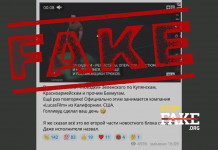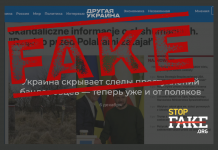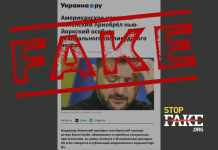First of all, here is a bit of history. Early May, in one of the largest American newspapers, The New York Times, there was a journalistic report by C.J. Chivers, who spent a week in Slovyansk, a Ukrainian city. There he conversed with representatives of the local “12th Defensive Company” of the self-proclaimed “People’s Republic of Donetsk”. In the story, Chivers described the militants’ motivation and way of life, and also stated that not one of them was found to be a citizen of Russia. Meanwhile, he also wrote that many of the militants have strong ties to Russia, and that they have served in the Russian army. One of them, named Kostya, received his Ukrainian citizenship only two years ago.
Chivers also wrote that even though he did not discover a direct connection between Russia and the weapons possessed by the “12th Defensive Company”, in Slovyansk, the militants themselves could not convincingly explain where they obtained them. The Russian press presented this material as evidence of the absence of Russian military in Ukraine.

In reality, Chivers wrote about one specific company, with which he had made contact, and not about the whole of the militia forces of the East. The fact that there are Russians among the militants had already been proven multiple times (first, second), and even the militants themselves had never concealed it. This was also said by Igor “Strelkov” Girkin, in his video address to the inhabitants of the “People’s Republic of Donetsk”, where he complains that they do not wish to go to war for the newly formed state. “Strelkov”, by the way, who is also a Russian, was born and grew up in Moscow, served in the Russian army, and fought as a mercenary in hot spots.
Nevertheless, many Russian media outlets perceived the fairly neutral story of The New York Times as one which defends the interests of the separatists and of Russia. Consequently, when news of the dismissal of executive editor Jill Abramson came about, they were quick to tie the two events together.

First of all, the material of The New York Times is a journalistic report, and not an interview, as it was called by Ridus, in their article headline. Second of all, neither the website Politico, to which the Russian outlet makes a reference, nor on any other “local” mass media outlet is there any mention of Abramson’s dismissal being linked to the article on Slavyansk. There is also not one mention of the U.S. Department of State criticizing this material.
On the other hand there is plenty of material, written long before Abramson’s dismissal, about serious problems within the editorship of the NYT; about the heavy character of its executive editor; and about her repeated conflicts with upper management, in part with the newspaper’s publisher – Arthur Sulzberger Jr.
In an editorial article of the NYT itself, written following the dismissal of Abramson and clearly in her defense, there is also no mention of any pressure on editorial politics or any type of censorship. In each case, the subject matter reflects only management-level conflicts.




